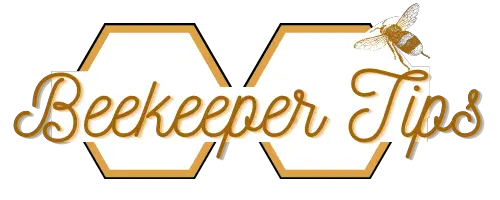The Red Mason bee is a fascinating and important solitary bee that you can keep in your garden, balcony, or farm. Mason bees are bees that use mud to build nests or partitions in their nests. Red bees as they are sometimes called, are very important pollinators. Establishing a population of these in your garden can improve productivity and provide you with hours of enjoyment. In this article, we explain what a mason bee is, and have a look at how you can do your bit to conserve the Red Mason Bee.
Table of Contents
Mason Bees
Mason bees are solitary bees. They nest in various little hidden nooks and crannies in nature. These can range from cracks in rocks to holes in wood to more exotic locations such as snail shells. The bees typically pupate over a season and emerge in spring. Males emerge first, followed by females. The females will find a place to nest and then mate with a male.
The male mason bee dies. The female lives for the season, collecting pollen and nectar for her young. She makes little balls of pollen and nectar, then lays an egg in the ball, builds a mud “masonry” wall. Then she makes another ball, another egg, and so on. The eggs at the back are fertilized eggs – which means they are female. The eggs towards the mouth of the nest are male, or unfertilized eggs.
Red Mason Bees
Red Mason bees are a specific species of mason bee native to the United Kingdom, Europe, and extending into North Africa and Iran. This bee occupies a niche very similar to that of the Blue Orchard Mason Bee found in North America.
The mason bees are excellent pollinators. In certain crops such as almonds, cherries, and apples which have pollen that is not very attractive to honeybees, these pollinators can significantly improve yields. I have watched honeybees fly right over apple orchards and ignore them in favor of wildflowers, while the orchards were humming with mason, carpenter, and leafcutter bees.
Osmia – A ‘Smelly’ Name
The species name of the Red Mason bee is Osmia bicornis. The reason these bees were named Osmia is that they produce a very specific lemony scent that marks their specific nests. Each female marks the nesting site she is propagating with her own unique scent. In experiments, scientists have moved nesting tubes around in a nesting site and found that a Red Mason bee will be able to find her specific nesting site even if it is moved. This is due to her marking it with her “perfume” of scents.
Living With Red Mason Bees
This is a particularly discrete bee. As with all bees, the males cannot sting. The females do have a little sting, but they are very disinclined to use it. You really have to almost catch a bee and push its abdomen against your skin to get a sting.
I sometimes do silly things and have actually been stung by a mason bee in the pursuit of knowledge. The sting was very similar in feeling to being stung by a honey bee that has just emerged from the brood.
When a honeybee emerges from brood it is a grey-colored confused little bee and its sting is quite insignificant. You can see the sting in your skin but it takes about five minutes for the “sting” of the sting to start being apparent. This is in comparison to a guard honeybee with a fully developed sting bouquet where you feel the sting instantly.
In summary, in my opinion, the sting of a mason bee hardly stings at all.
How To Make Your Own Red Mason Bee Nesting Site (Applies For Other Mason Bees Too)
These are really easy bees to create nesting sites for. If you can find some bamboo, or reed, or cane and cut it into equal lengths this is all you really need. You can place these in some sort of shelter, or tie them with a string and hang them from a sheltered eave or similar place. If you want to be fancy you can make a small box to put them in.
I have also found I have had luck with these bees by finding a soft partially rotted tree branch. Find a brand that is 5 inches or more across. Drill holes 4-5 inches into the wood with various drill bits of different sizes. Watch which holes attract the most bees. In the subsequent seasons, you can prepare more pieces of wood and drill at these hole sizes that work.
Mason Bee “Colonies”
Red Mason bees are solitary but they do form a sort of colony over time. If there are ample nesting sites, young bees that emerge in spring will just make a nest in a tube near where they emerge from. In many cases they even breed with brother drones, hence there is an element of inbreeding that can occur.
After two or three years you will find that your mason bee nest becomes quite busy. The bees will begin having a noticeable impact on the productivity of your garden plants. My mother and I are both avid gardeners and enjoy our Fava beans. These tend to flower in late winter to spring in our area and are poorly pollinated by honeybees. However, when the mason, carpenter, and leafcutter bees emerge, they pollinate the fava beans very well and the flowers begin to set.
If you don’t want to make your own Mason bee nesting site you can buy one like this or this or this.
We hope that this article has helped you understand how the Red Mason Bee can bring joy and a happy buzz into your garden and life. These little Masons are the best little friends to have around your garden – no worry of stings, and fun to watch. They seem to largely ignore us humans, and hence you can go right up to their nesting sites and watch what they get up to.
If you enjoyed this, please share, and do your bit to encourage more of us to look after our pollinators.

Dr. Garth A. Cambray is a Canadian/South African entrepreneur and beekeeper with 28 years of experience in apiculture and specializes in adding value to honey. His Ph.D. research developed a new advanced continuous fermentation method for making mead that has resulted in a number of companies globally being able to access markets for mead. His company, Makana Meadery, exports honey mead to the USA where it is available to discerning connoisseurs. He has also developed technologies to commercially manufacture organic honey vinegar in Zambia for export globally. He holds a few patents globally in the ethanol industry and believes in technology and knowledge transfer for human development and environmental sustainability. One of his proudest achievements is the fact that the wind farm he started at one of his old apiary sites has essentially made his hometown carbon neutral.



